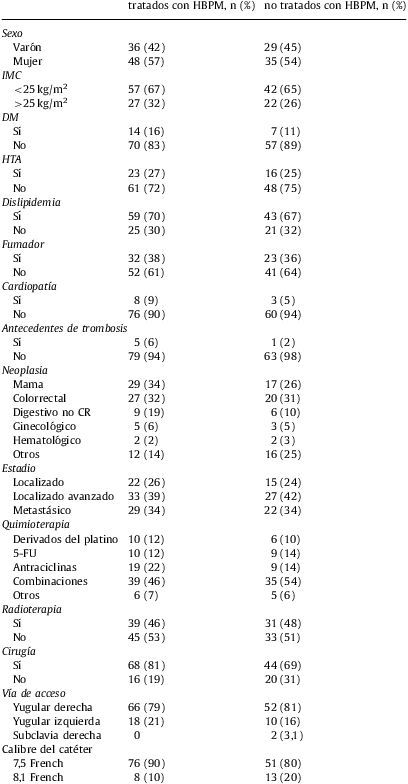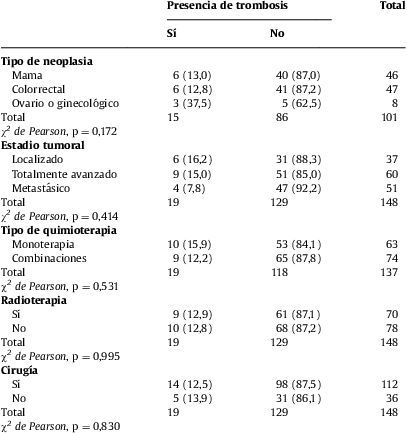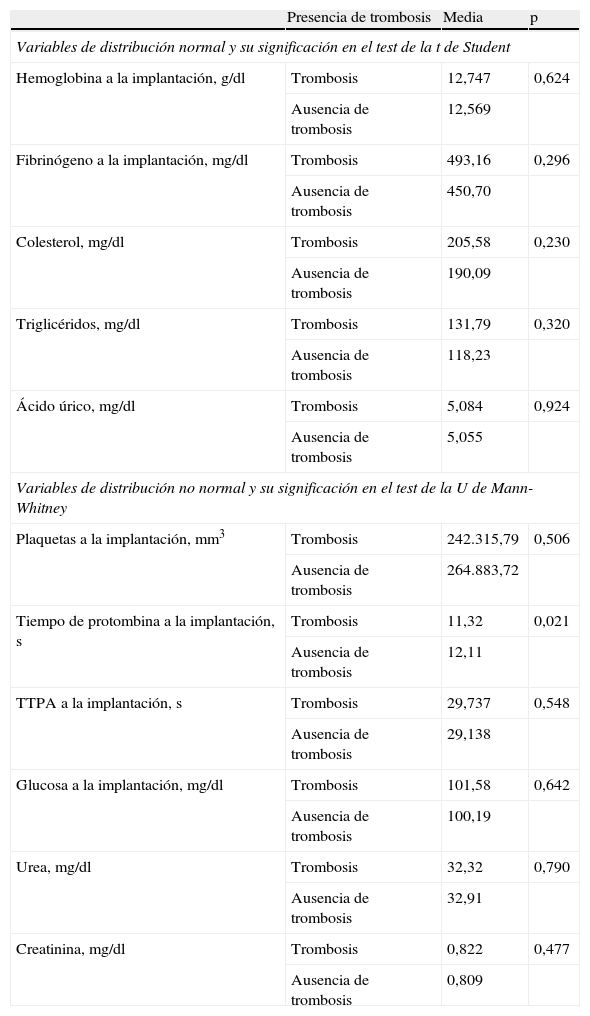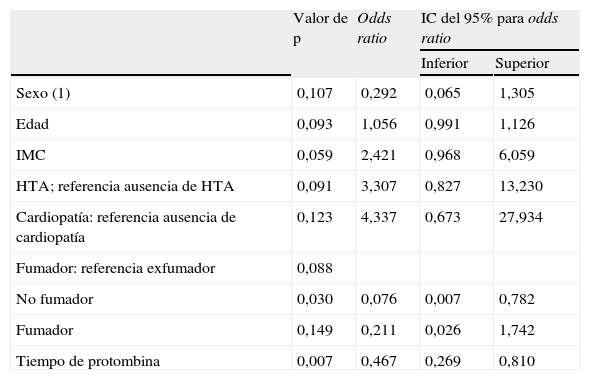Este estudio pretende analizar la incidencia de trombosis de extremidades superiores y de embolia pulmonar en pacientes oncológicos portadores de catéter venoso central, así como valorar si las heparinas de bajo peso molecular (HBPM) podrían ser útiles en prevenir este tipo de episodios.
Pacientes y métodoPacientes oncológicos portadores de catéter tipo porth a cath se trataron con bemiparina o no de forma no aleatorizada; se realizó seguimiento clínico y radiológico mediante flebografía el día 1 y ecografía Doppler los días 1, 45 y 90 tras la implantación. Se determinó la incidencia de trombosis en pacientes con o sin tratamiento con bemiparina sódica (3.500 U/día) y su relación con posibles factores de riesgo.
ResultadosSe encontraron 19 episodios trombóticos en 148 pacientes elegibles: el 5,41% de trombosis venosa profunda de extremidad superior sintomática y el 2,03% asintomática; un caso de embolia pulmonar (0,68%); el 2,70% de disfunción del catéter, y el 2,03% de trombosis de extremidades inferiores. Hubo mayor porcentaje de episodios trombóticos en el grupo de tratamiento con HBPM (15,5%) que en el grupo sin profilaxis (9,4%); la diferencia no fue significativa (p=0,272). Los únicos factores de riesgo significativos fueron el tiempo de protrombina, la hipertensión arterial y el sobrepeso.
ConclusionesLa colocación de catéteres venosos centrales es una técnica de gran utilidad, con bajo porcentaje de complicaciones trombóticas clínicamente manifiestas. La bemiparina sódica no presenta una relación favorable para disminuir el riesgo de trombosis en estos enfermos.
Our study was designed to assess the incidence of thrombosis in the upper limbs and of pulmonary embolism in oncological patients with indwelling central venous catheters, and to evaluate, also, the potential role of LMWH to prevent these events.
Patients and methodsOncological patients undergoing placement of a central venous acccess (port-a-cath type) were treated with or without bemiparin in a non-randomized fashion. Assessment included clinical and radiological follow-up. A phlebography on the first day and ecodoppler on days 1th, 45th and 90th were performed. Patients received or not prophylactic bemiparin (3500UI/day) in a non-randomized way. The incidence of thrombosis in both groups was assessed as well as its relation with some risk factors.
ResultsOne hundred and forty eight patients were eligible; 19 thrombotic events were found. The incidence of symptomatic upper extremity thrombosis was 5.41%, asymptomatic thrombosis in 2.03% ; there was one case of pulmonary embolism ( 0,68%); catheter failure occurred in 2.70%; incidence of lower extremities deep venous thrombosis was 2.03%. There was a higher percentage of events in the group of patients treated with bemiparin than in the not treated individuals (9.4%), although the difference did not reach statistical significance (p=0.27). The only risk factors reaching statistical significance were the prothrombin time, high blood pressure and overweight.
ConclusionsCentral venous catheters are very useful in oncology. The procedure was related with a low percentage of thrombotic complications. Sodic bemiparin does not reduce the thrombotic risk in these patients.
Artículo
Comprando el artículo el PDF del mismo podrá ser descargado
Precio 19,34 €
Comprar ahora










